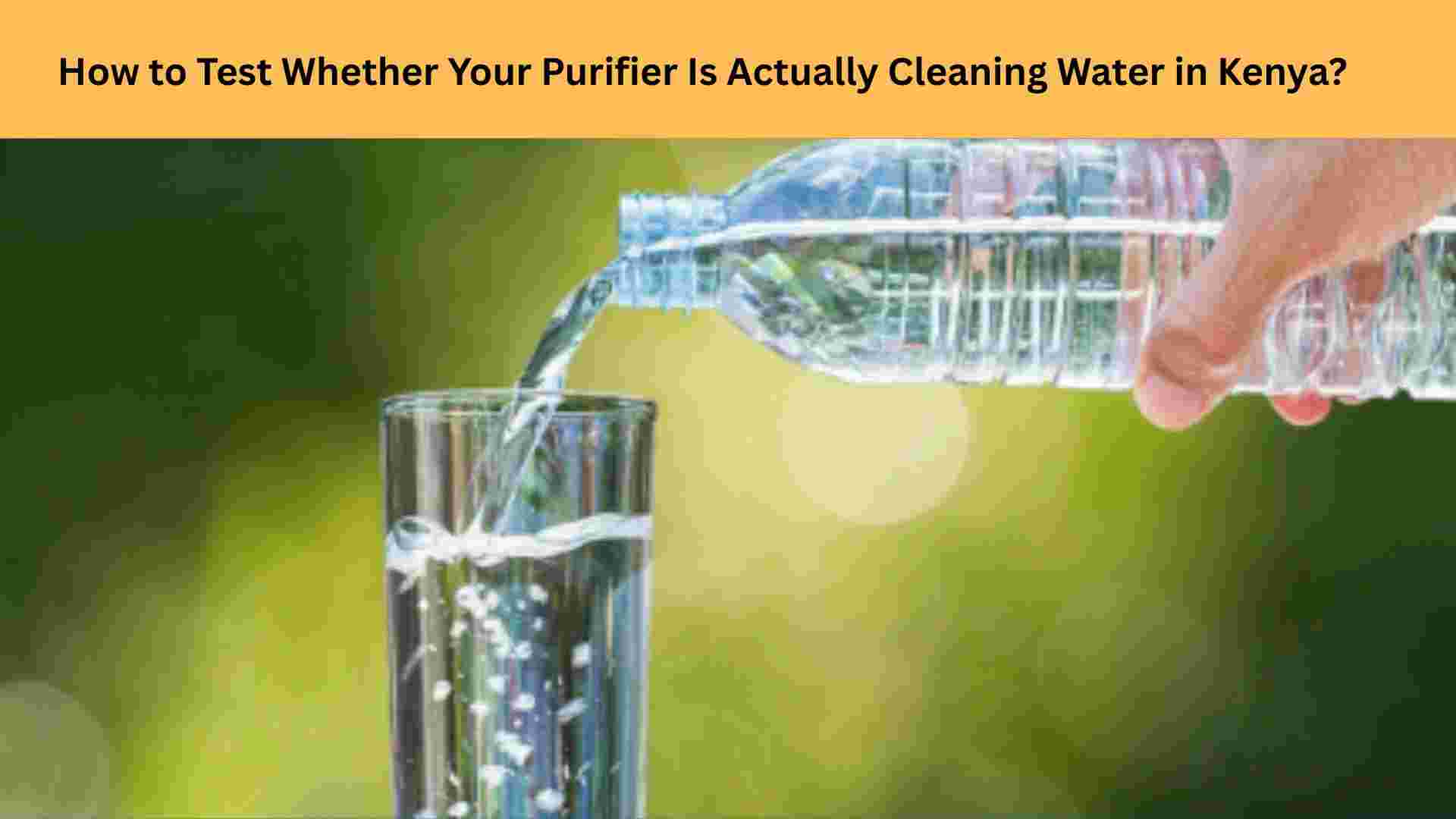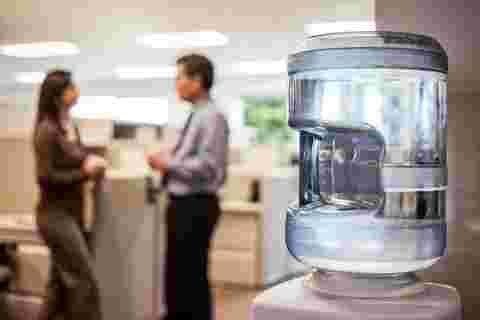How to Test Whether Your Purifier Is Actually Cleaning Water in Kenya?

Introduction: The Water Looks Clear, But Is It Really Safe?
You pour yourself a glass from your purifier, the water looks crystal clear, and you take a sip without thinking twice. But here’s the uncomfortable question—how do you really know it’s clean? The truth is, not all purifiers perform as promised, especially after months of use or poor maintenance.
Many Kenyan households rely on filters to make tap or borehole water drinkable. Yet few stop to check if those filters are still working effectively. It’s easy to assume technology handles everything, but that little box on your counter isn’t magic—it needs attention.
That’s why learning how to test the performance of drinking water purifier machines in Kenya matters. Because sometimes, what looks pure isn’t pure at all.
Why Testing Your Purifier Matters
Think of your purifier as a silent guardian. It works daily, filtering invisible threats you never see—bacteria, lead, fluoride, or excess minerals. Over time, though, filters clog, UV bulbs dim, and systems wear out.
When that happens, your “clean” water could slowly start carrying back the very impurities you wanted to avoid. The scary part? You might not notice the change immediately.
Testing your purifier isn’t just a chore—it’s your way of confirming that your investment is still protecting your health.

1. Start With the Obvious: Taste, Smell, and Appearance
Before you dive into fancy tests or kits, start with your senses.
Taste: If your water suddenly tastes metallic, salty, or bitter, something’s off. It could be mineral buildup or bacterial growth inside your filter.
Smell: A musty or chlorine-like odor often signals organic contamination or ineffective carbon filters.
Appearance: Cloudiness or visible sediment means the filtration system isn’t trapping particles properly.
Now, a quick note—sometimes your local water source changes seasonally, especially in Kenya’s dry or rainy months. That can affect taste or clarity temporarily. But if the change persists for more than a few days, don’t ignore it.
2. Use a Home Water Testing Kit
One of the easiest ways to check your purifier’s performance is with a home water testing kit. These kits are available in most hardware or supermarket stores in major cities like Nairobi, Kisumu, and Mombasa.
They test for key indicators like:
-
pH levels
-
Chlorine
-
Nitrates and nitrites
-
Hardness (calcium and magnesium)
-
Bacteria presence (in some advanced kits)
Here’s how to use one:
-
Collect water from your purifier’s outlet in a clean container.
-
Follow the instructions for dipping or mixing the test strips.
-
Compare the colors to the provided chart.
If you notice abnormal readings—say, the pH is off, or chlorine levels are high—it could mean your purifier isn’t doing its job right.
Tip: Always test both before and after purification. That way, you can compare and see the actual difference your machine makes.
3. Check the Total Dissolved Solids (TDS) Level
TDS refers to the amount of minerals, salts, and organic matter dissolved in water. While not all dissolved solids are harmful, excessively high or low TDS levels can indicate problems.
For example, borehole water in parts of Kenya often has high TDS due to mineral content. A good purifier should reduce that to safe, palatable levels.
You can buy a TDS meter (a small digital device) for under KSh 2,000 in many stores or online.

To test:
-
Fill a glass with purified water.
-
Insert the TDS meter’s probe into it.
-
Read the number displayed (measured in ppm—parts per million).
-
0–50 ppm: Very pure (often distilled).
-
50–150 ppm: Ideal for drinking.
-
150–300 ppm: Acceptable, but may start tasting mineral-heavy.
-
Above 300 ppm: Needs attention—filters might not be working properly.
If your purified water’s TDS is too high, your RO membrane or carbon filter might need replacement.
4. Observe Water Flow Rate
If your purifier’s water flow has noticeably slowed down, it’s trying to tell you something.
A sluggish flow often means filters are clogged with sediment or biofilm buildup. On the other hand, if the flow is too fast, water might be bypassing proper filtration altogether—especially in cheaper or worn-out models.
It’s a simple but underrated check. Keep a mental note of how long your purifier normally takes to fill a glass or tank. If that changes drastically, it’s time to inspect the filters.
Also Read this : The Hidden Power of Precision: Choosing the Right Mitsubishi Spare Parts in Dubai
5. Keep an Eye on Filter Change Indicators
Most modern purifiers have LED lights or alarms that alert you when filters or UV lamps need replacement. Don’t ignore those signals—they’re there for a reason.
However, in Kenya, frequent power cuts or voltage issues sometimes reset or disable these indicators. So, it’s a good habit to manually record the installation date and replace filters every 6–12 months, depending on usage.
Here’s a small trick: label the date of the last change right on the purifier with masking tape. It’s a simple reminder that saves you guesswork later.
6. Look Out for Biofilm and Algae
If your purifier stores water in a tank, check the inside regularly. A thin slippery layer (biofilm) or greenish tint indicates bacterial or algal growth—especially if the purifier sits near sunlight.
This buildup can undo all the purification work happening inside. Even a little can multiply fast, especially in Kenya’s warm climate.
To fix it:
-
Empty the tank completely.
-
Clean with mild vinegar or a purifier-safe disinfectant.
-
Rinse thoroughly before refilling.
Regular cleaning keeps the system safe and extends its lifespan.
7. Test for Microbial Contamination
This one’s more advanced but worth considering if you live in areas where waterborne diseases are common. Microbial tests detect the presence of E. coli and coliform bacteria—two big indicators of unsafe water.
You can either:
-
Buy a simple bacterial testing kit, which changes color if contamination is detected.
-
Send a sample to a certified lab (universities or water agencies in Kenya offer this service for a small fee).
If bacteria show up in your “purified” sample, stop using the machine immediately. Replace filters and sterilize all storage parts before use.
8. Cross-Check With Your Local Water Quality Report
Kenya’s Water Services Regulatory Board (WASREB) and local water utilities publish reports about municipal water quality. Comparing those findings with your test results gives you a clear picture of what’s happening inside your purifier.
If the source water quality has recently changed—say, higher fluoride in Nakuru or iron in Eldoret—that might explain why your purifier seems less effective. It’s not failing; it’s just being challenged by tougher conditions.
Understanding your water source helps you choose the right technology—RO, UV, or UF.
When to Replace Your Purifier’s Filters
Filters aren’t forever. They degrade quietly, even if your water still looks fine. Here’s a general rule:
-
Sediment filter: every 6 months.
-
Carbon filter: every 9–12 months.
-
RO membrane: every 2 years.
-
UV lamp: every 1 year.
These numbers vary with usage and water quality. Households using borehole or well water may need replacements more often due to higher contamination.
If you’re unsure, it’s safer to replace early than risk exposure to harmful elements.
Common Signs Your Purifier Isn’t Working Right
-
Water tastes “off” despite cleaning.
-
You notice scaling or white residue on utensils.
-
Frequent stomach upsets among family members.
-
Filters look dark, slimy, or smell bad.
-
Alarms or lights flash but you ignore them (we’ve all done it).
If more than one of these signs shows up, your purifier needs immediate servicing.
Practical Maintenance Tips
-
Keep it away from sunlight: UV light can promote algae growth inside transparent tanks.
-
Flush it weekly: Run a few liters through the system to prevent stagnation.
-
Use clean hands when handling filters: Contamination often starts with handling.
-
Never ignore leaks: Even small ones can affect pressure and efficiency.
-
Schedule professional service annually: Think of it like a health checkup for your purifier.
A little discipline goes a long way.
FAQs About Testing Purifiers in Kenya
1. How often should I test my purifier?
At least once every 3–6 months, or any time the water quality, taste, or smell changes.
2. Can I test my purifier without special equipment?
Yes. Start with sensory checks (taste, smell, clarity) and flow rate observation before using tools like TDS meters or test kits.
3. Are home test kits accurate?
They’re good for detecting basic parameters. For detailed bacterial or metal analysis, use a certified lab.
4. Does rainwater need purification?
Yes. Even rainwater can collect dust, soot, and heavy metals from rooftops. Always purify before drinking.
5. Can I fix poor readings myself?
Some issues—like clogged filters—are easy to solve. But if readings remain off after maintenance, call a technician or replace the system.
When to Call a Professional
If you’ve tested, cleaned, and replaced parts but the water still tastes or smells wrong, don’t gamble with your health. Most purifier companies in Kenya have service centers or authorized agents who can inspect and recalibrate your unit.
It might cost a bit, but consider what’s at stake—your family’s safety.
Conclusion: Your Purifier Protects You Only If You Protect It
Testing isn’t about paranoia—it’s about peace of mind. Every purifier, no matter how advanced, has limits. The only way to know it’s still doing its job is to check once in a while.
Drinking water purifier machines in Kenya have made safe water more accessible than ever before, but they’re only as good as their maintenance. A quick test today can prevent weeks of illness or worry tomorrow.
So, go ahead—fill that glass again. But this time, make sure it’s clean for real.
- Art
- Causes
- Crafts
- Dance
- Drinks
- Film
- Fitness
- Food
- Игры
- Gardening
- Health
- Главная
- Literature
- Music
- Networking
- Другое
- Party
- Religion
- Shopping
- Sports
- Theater
- Wellness



